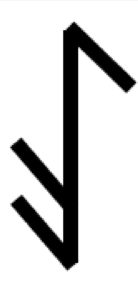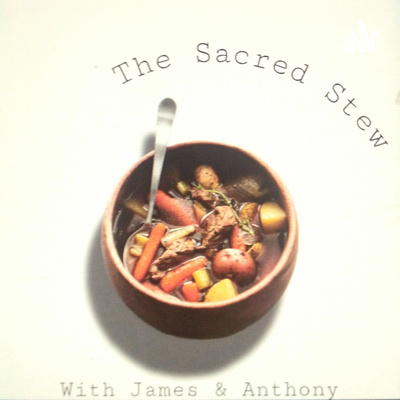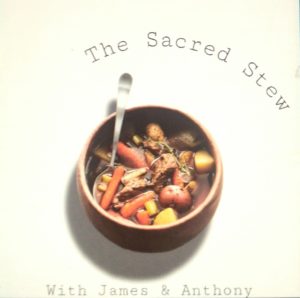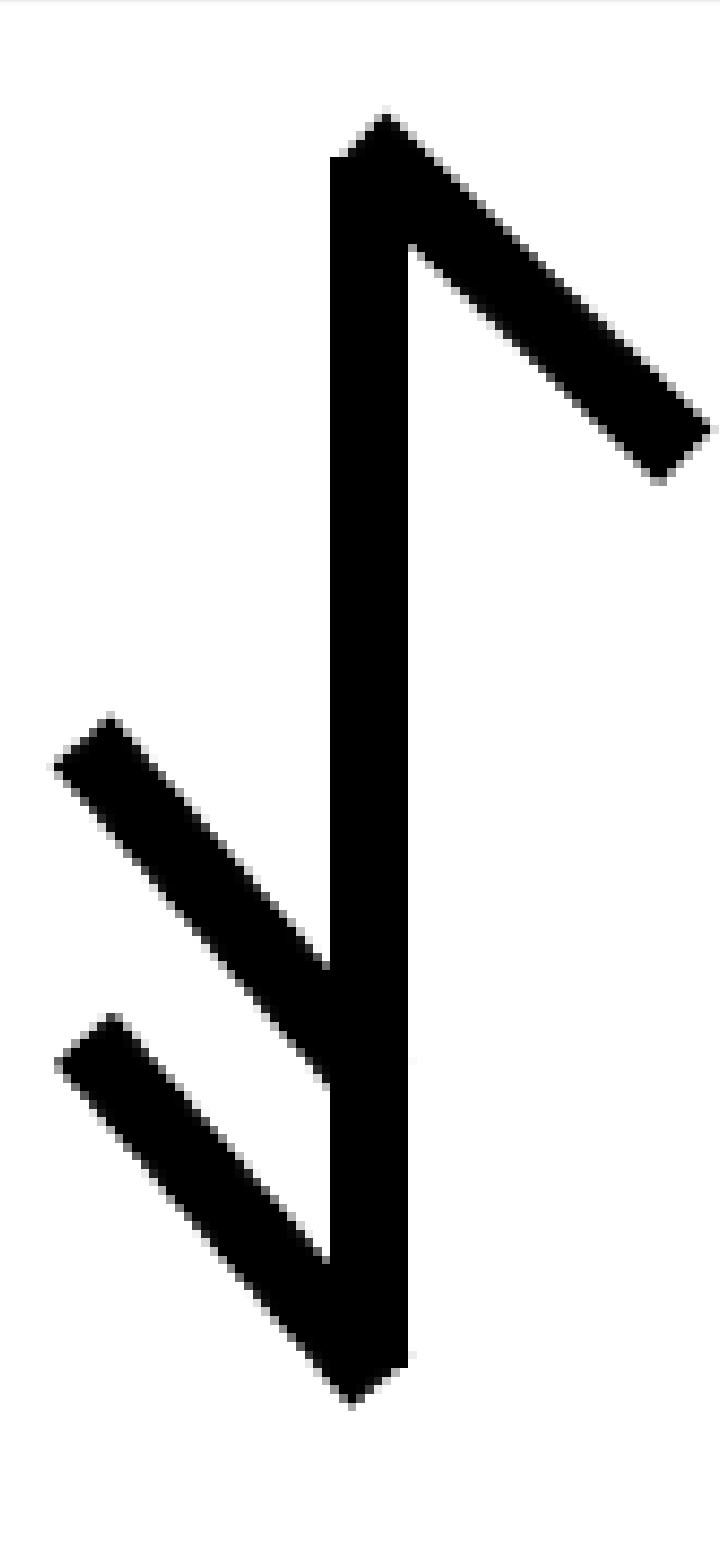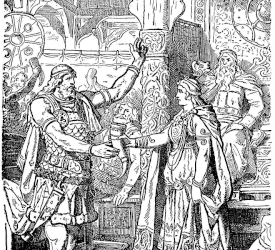ALU!
This phrase is often said during blot or in other contexts of conversation, but what does it mean? Why do we say ALU? And what is its significance to our belief system and rituals? This phrase is one of the most important concepts within our faith and its very important for the folk to understand its meaning because it has everything to do with our fate and protecting our future.
ALU (ᚨᛚᚢ) is intrinsically tied to runes. We see this phrase almost exclusively used with the elder futhark ( a few Anglo Saxon examples also exist) on several archeological artifacts such as urns, coins, rune stones, burial items and even protection charms. ALU is the most common magical runic formula that we know of, and while academia (non-practitioners of the faith) may have provided various theories on its meaning and purpose I will attempt to provide you a spiritual understanding of its significance as a practioner of the faith.
The etymology of the word has been widely debated over the last couple hundred years by linguists, but I would point out that there is a reason for this confusion on its etymology. The term seems to have disappeared from inscriptions for a significant period of time during the migration period of the folk during the christianization of Europe. As christianity spread by force in our native homelands, our religious practices and beliefs were outlawed and many of our ancestors perished by drowning (what the christians called “baptism”) and sword. Over time it became essential to conceal sacred places, items and beliefs by encrypting their meanings and knowledge in common lore and stories that our ancestors passed down through the ages. ALU is one such example of the concealment of our belief system.
In stanzas 7 and 19 of the Old Norse poem Sigrdrífumál, Knowledge of “Ale Runes” is imparted by the Valkyrie Sigdrifa (Brynhildr) to Sigurd. The old Norse word is Ølrunar i.e. ALU Runes. Verse 19 continues:
“hveim er þer kná oviltar / oc ospilltar
ser at heillom hafa;
niottu, ef þu namt,
unz riufaz regin.”
“Who knows them rightly and reads them true,
Has them himself to help;
(Ever they aid, till the gods are gone.)”
It is these verses that convinced some linguists that ALU means Ale, as the term eventually became a commonly used term for this as a metonym (allegory or metaphor). However we can see in the ending passage of verse 19 that true knowledge of these Ale Runes (ALU Runes) offers protection to the one that has learned its true meanings. It is within this concept of “protection” that we find the true understanding of ALU.
There is another important word related to ALU that is tied to this concept of protection i.e. Alh. An “Alh” has been defined by linguists as a sacred area, sacred grove or a temple. ALU and ALH are inextricably tied to eachother but they do not mean the same thing in the original context of our faith. Although modern definitions of “Alh” includes the idea that this word can mean a temple, I would argue that this definition was the result of our ancestors reaction to the christianization of our homelands and became associated as a means of convention rather than historical practice. Originally, as noted by Tacitus in his Germania, the germanic folk worshiped in sacred groves and did not consider confining our gods to indoor buildings as befitting our gods. It was not until the spread of christianinity in Europe and the destruction of our holy sites that we see a trend of our ancestors gathering for rituals in buildings such as hofs. I believe this was a reaction to the christian persecution of our folk and their response to further hide knowledge of sacred areas from their enemies and to protect the folk. Over time worshipping indoors became the common practice and knowledge of our sacred spaces became all but forgotten, especially as our ancestors began migrating north and west to lands further away from the christian onslaught. The reason we must carefully consider what the actual definition of an “alh” is, is because an alh was the center of worship and protection of our gods and the rituals performed within an alh are the catalyst to receiving this protection from our gods.
We can find support for the definition of an “alh” being strictly related to sacred groves or natural outdoor areas in the preservation of this word in modern Lithuanian as “alkas”, which exclusively means holy place, place of the gods, or an alter in an outdoor space. What makes this definition significant is that Lithuanian is the most archaic indo european language still spoken in modern times and it has properly preserved this definition of an alh to this day. Additionally, the laws of an alh make it obvious that it strictly referenced an outdoor space. The laws surrounding an alh forbade the harming of any life within an alh; it was forbidden to harm any animal, cut any part of a tree or intentionally pull a blade of grass. An alh was a place of protection, not just for the folk but for all sacred life within the alh. The only exception to these laws was the preist and the sacrifice to be given to the gods.
So how does an “alh” relate to “ALU”? The word “alh” originates from “ALU”, possibly derived for PIE word h₂lek- which means to ward off, or to protect. ALU is the source of fate, the origin of creative forces representing the sources of creation. It consists of three runes ᚨ-ᛚ-ᚢ (Anzus-Lauguz-Uruz), which is the recipe for the sacred mead. This is profound, because the epic lore tells us that our gods and the jotun battle for control of this sacred mead, as the one that controls the mead has the ability to control fate, or at least influence fate.
From an epic understanding of our lore/history handed down to us and within a spiritual context, first there was ALU (ᚨ-ᛚ-ᚢ); then there was Audhumbla, Ymir and Buri; then there was Odin and his two brothers Hoenir and Lodur (Vili and Ve are titles of the two brothers). After the slaying of Ymir, most Jotun drowned in his blood. Bergelmir became the progenitor of a new line of giants, Odin became the progenitor of humans breathing ond into them, while Hoenir is the mead stirrer after ragnarok and brings forth life again with 9 surviving gods; while Lodur becomes the progenitor of the elven/dwarfish lines- Freyr is later given Elfheim as a tooth gift, leaving Lodur who had his status removed and was bound until ragnarok because of his revolt against Odin and the Aesir, he is the leader of the sons of muspel (also known as surt) who leads the charge against the aesir at ragnarok. It is important to understand the placement of the gods in this construction as it explains the reason why our god totems were three in nature i.e. Odin, Thor and Freyr. Freyr replaces Lodur, Hoenir waits until after surts destruction at ragnarok and then rises to stir the mead, and so Odin’s son Thor is given authority from Odin himself as the protector of Midhgard replacing the functions of Hoenir for the time being. In the next creation it appears that Hoenir replaces Mimir in the new creation within the next cycle as Thor dies at ragnarok but is able to resurrect himself.
Protection from what? Why do we need protection? To answer this question gets to the very root of our faith and our rituals. There was a time when our folk were at peace and lived in a golden age with the gods protection over us. The gods left us to our own and rarely took notice of us. This changed when one of our folk killed a god i.e. Hadding kills Svipdagr-Óðr in the guise a dragon or ormr (see UGMI ch. 106). At this point in the epic, Svipdagr has already married Freyja and is under her protection. Once Hadding commits this act of deicide the gods demand wereguild for the crime, Freyya appears before Hadding with the following curse:
“Whether you tread the fields afoot, or spread canvas overseas, you shall suffer the hate of the gods, and through all the world shall behold the elements oppose your purposes. Afield you shall fall, on sea you shall be tossed, an eternal tempest shall attend the steps of your wandering, nor shall frost-bind ever quit your sails; nor shall your roof-tree roof you, but if you seek it, it shall fall smitten by the hurricane; your herd shall perish of bitter chill. All things shall be tainted, and shall lament that your lot is there. You shall be shunned like a pestilent tetter, nor shall any plague be fouler than you. Such chastisement does the power of heaven mete out to you, for truly your sacrilegious hands have slain one of the dwellers above, disguised in a shape that was not his: thus, here you are, the slayer of a benignant god! But when the sea receives you, the wrath of the prison of Eolus shall be loosed upon your head. The West and the furious North, the South wind shall beat you down, shall league and send forth their blasts in rivalry; until with better prayers you have melted the sternness of heaven, and have lifted with appeasement the punishment you have earned.”
This curse is Freyja explaining the amount of suffering the Jötuns will cause. Ægir shall cause the seas to rise against him. Kári will bring the winds that will torment him. Hrímþursar will cause him, his animals, and his ship to freeze. Fárbauti, the Jötun of hurricanes, will destroy any roof he lies under. The Dwavres of the cardinal directions shall turn against him. The wereguild to the gods for this crime was blot, offering sacrifices for protection from these forces. The blot restores the bonds between the gods and the folk.
As the story continues….”So, when Hadding went back, he suffered all things after this one fashion, and his coming brought disquiet upon all peaceful places. For when he was at sea a mighty storm arose and destroyed his fleet in a great tempest: and when, a shipwrecked man, he sought entertainment, he found a sudden downfall of that house. Nor was there any cure for his trouble, ere he atoned by sacrifice for his crime, and was able to return into favour with heaven. For, in order to appease the deities, he sacrificed dusky victims to the god Freyr. This manner of propitiation by sacrifice he repeated as an annual feast, and left posterity to follow. This rite the Swedes call Frøblod (Freysblót, a part of the Vetrnætr).” Saxo Destam Danorum bk 1.
We can see within this story the origin of the main ritual function of blot i.e. protection. As mentioned before, Tacitus wrote about how the germanic folk worshipped in sacred groves (an alh). These groves were the Alh or protected sanctuary where these blots and rituals would take place. These spaces were protected because they were the places that the gods resided i.e. the ve. The ve was the place where the god totems (or idols) resided within the Alh. Only the preists were allowed to enter the ve with the sacrificial offering. The alh not only contained the ve but also contained the hörgr. The hörgr was the altar, from which the preist would perform the sacrificial slaughter. The preist would then take the offering from the hörgr to the gods in the ve. The hörgr is the sending station while the ve, where the gods resided, was Iðavöllr the receiving station of the gods.
How does this connect to ALU? ALU existed before an ALH, and its meaning is esoteric and metaphysical as it is the source of creation and fate. While “ALh” derived from ALU with a specific meaning of a protected and sacred natural place (via connotation of what ALU represented inregards to fate), as an alh was literally a place of protection because it was a place where the gods resided (God Totems) in the ve, and could literally intervene with fate, on behalf of the folk.
ᚨ- Gods
ᛚ-Water, Wells, Fate etc.
ᚢ- The bull (The Sacrifice)
= PROTECTION
